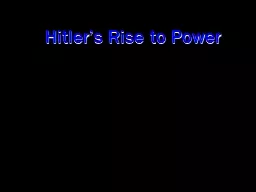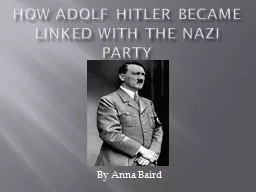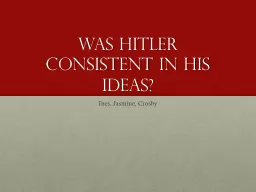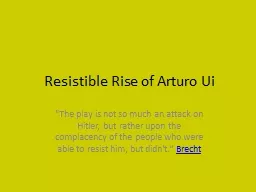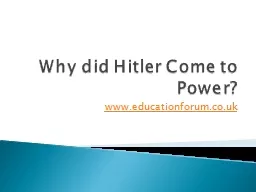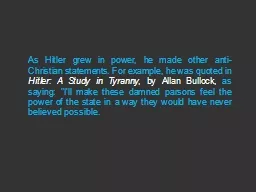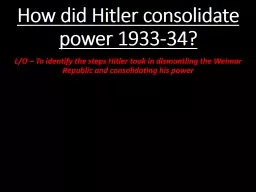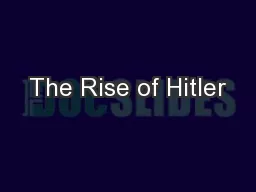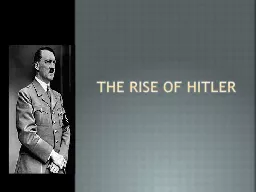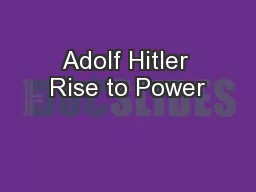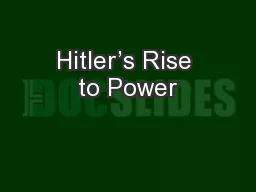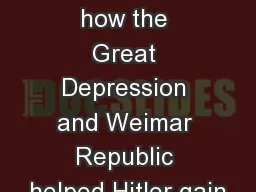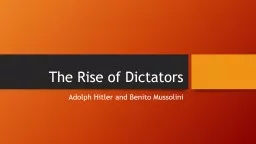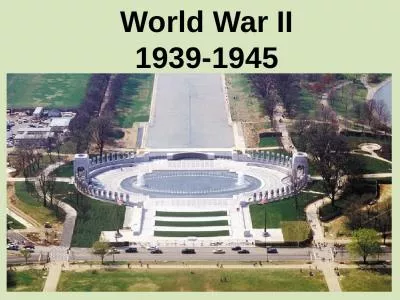PPT-Hitler’s Rise to Power
Author : sherrill-nordquist | Published Date : 2016-12-07
Created by The Birmingham Holocaust Education Committee February 2008 Born in Austria BraunauamInn Insert Hitler Family tree Reared Catholic Adolf center with schoolmates
Presentation Embed Code
Download Presentation
Download Presentation The PPT/PDF document "Hitler’s Rise to Power" is the property of its rightful owner. Permission is granted to download and print the materials on this website for personal, non-commercial use only, and to display it on your personal computer provided you do not modify the materials and that you retain all copyright notices contained in the materials. By downloading content from our website, you accept the terms of this agreement.
Hitler’s Rise to Power: Transcript
Download Rules Of Document
"Hitler’s Rise to Power"The content belongs to its owner. You may download and print it for personal use, without modification, and keep all copyright notices. By downloading, you agree to these terms.
Related Documents

